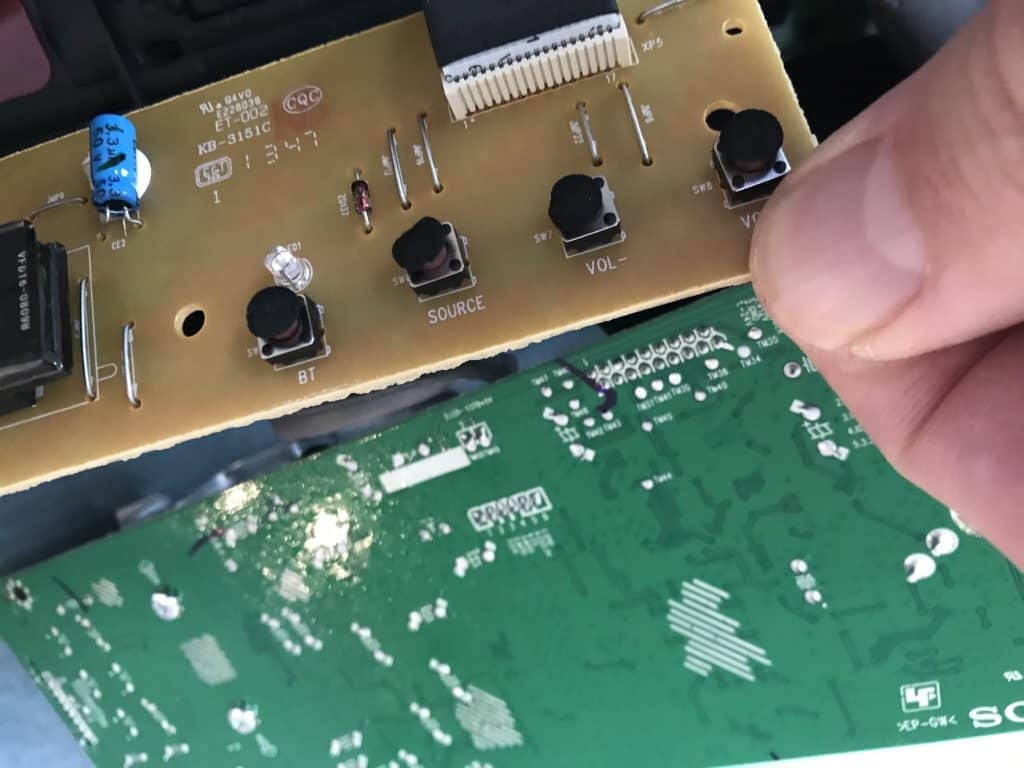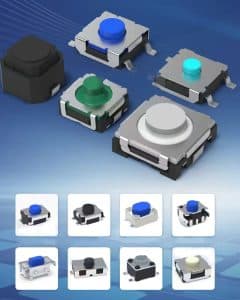In today’s world of ubiquitous electronic devices, tactile switches, as core components for user interaction, are found everywhere from home remote controls and smart doorbells to industrial control panels.
However, a common yet perplexing problem is that these normally responsive switches may malfunction, become unresponsive, or even cause complete device failure after damp weather or accidental spills.
This article will explore the mechanisms by which moisture damages tactile switches and offer a comprehensive solution, ranging from emergency treatment to design-based prevention.
I. Tracing the Root Cause: How Humid Environments “Erode” Tactile Switches
To solve the problem, we must first understand its root cause. Moisture is essentially the result of the combined effects of water vapor and potentially impurities (such as salt in the air). The hazards to tactile switches are mainly manifested in three aspects:
- Oxidation and corrosion of metal contacts (core hazard): The core of a tactile switch’s operation lies in the reliable contact between the internal metal spring and the fixed contacts. In dry air, a very thin oxide film forms on the metal surface, which usually does not affect conductivity.
However, in humid environments, water molecules become electrolytes, accelerating the electrochemical corrosion process of the metal (especially lower-cost copper or iron-plated contacts), generating a thicker oxide layer with extremely high resistance (such as verdigris).
This oxide layer acts like a wall, hindering the smooth flow of current, leading to poor switch contact, manifesting as button malfunction or intermittent functionality.
- Degraded insulation performance (short circuit risk): The spacing between switch pins on a printed circuit board (PCB) is very small. When moisture condenses or dust accumulates, it reduces the insulation resistance between the pins, generating a small leakage current.
In severe cases, such as direct water ingress, it may directly cause a short circuit between the pins, resulting in false triggering of the switch, or even burning out subsequent precision chips, leading to more serious equipment damage.
- Mechanical Structure Jamming and Aging: The switch base is usually made of plastic. Certain types of moisture (such as seawater mist) or prolonged exposure to high humidity can slowly corrode the plastic or metal components, weakening the spring tension or deforming the base, affecting the switch’s feel and lifespan.

II. Remain Calm in an Emergency: Four-Step Emergency Treatment for Moisture-Induced Touch Switches
When you find that the device is malfunctioning due to moisture, remain calm and follow these steps:
- Step 1: Immediately Disconnect the Power. This is the most important and primary principle! If the device uses batteries, remove them immediately; if connected to a power adapter, unplug it immediately. This completely cuts off the power supply and prevents secondary damage due to short circuits.
- Step 2: External Drying. Gently wipe the surface of the device with a soft, absorbent cloth or paper towel to absorb all visible moisture. Do not shake the device vigorously to avoid spreading moisture internally.
- Step 3: Deep Drying (Core Step).
◦ Common Solution: Desiccant Method. Place the device, along with a large amount of food-grade desiccant (such as silica gel desiccant packets), raw rice, or a specialized electronic device desiccant packet, in a sealed container (such as a resealable bag). These materials effectively absorb any residual moisture inside the device. It is recommended to leave it for 24-48 hours.
◦ Precautions: Do not use a hairdryer on its hot setting to blow hot air directly onto the device! High temperatures may melt the plastic components of the switches or accelerate the penetration of internal moisture, resulting in more harm than good. If you must use a hairdryer, use only the cool setting and maintain a safe distance.
- Step 4: Comprehensive Inspection and Testing. After drying, install the battery or connect the power supply and test the device. If the function is restored, observe for a period of time; if the problem persists, it indicates possible internal corrosion, requiring professional repair.
Important Note: This method is suitable for minor moisture ingress (such as high humidity or a small amount of moisture). If the device is completely submerged in liquid, it is strongly recommended to take it directly to a professional repair shop.
III. Prevention is Better than Cure: Building a Robust Defense Through Design and Selection
For equipment manufacturers and R&D engineers, considering moisture-proof measures during the product design phase is crucial for improving product reliability and lifespan.
- Choose Switches with Protection Ratings: Commercially available tactile switches typically have IP (Ingress Protection) ratings. For example, a switch labeled IP67 means it is completely dustproof (Level 6) and can withstand brief immersion in water (Level 7). For outdoor equipment, kitchen appliances, and other applications prone to moisture exposure, sealed tactile switches with higher IP ratings should be prioritized.
- Apply Conformal Coating to PCBs: Applying a thin layer of conformal coating (moisture-proof, salt spray-proof, and mildew-proof) to the PCB after the switches and other components are soldered is a highly cost-effective protective measure. This transparent protective film effectively isolates moisture, dust, and corrosive gases, directly protecting the switch pins and circuitry, significantly improving the overall reliability of the PCBA board.
- Optimize Structural Design: In product casing design, labyrinth structures and additional sealing rings can be used to minimize the path for external moisture to enter the device, creating a relatively dry working environment for internal switches and circuits.
IV. Conclusion
Although small, tactile switches are crucial for the stable operation of equipment. Faced with the common threat of moisture, users should master the correct emergency handling methods, while designers should prioritize preventative measures. Through scientific response strategies and thoughtful design, it is possible to ensure that equipment performs excellently and is durable in various environments.


